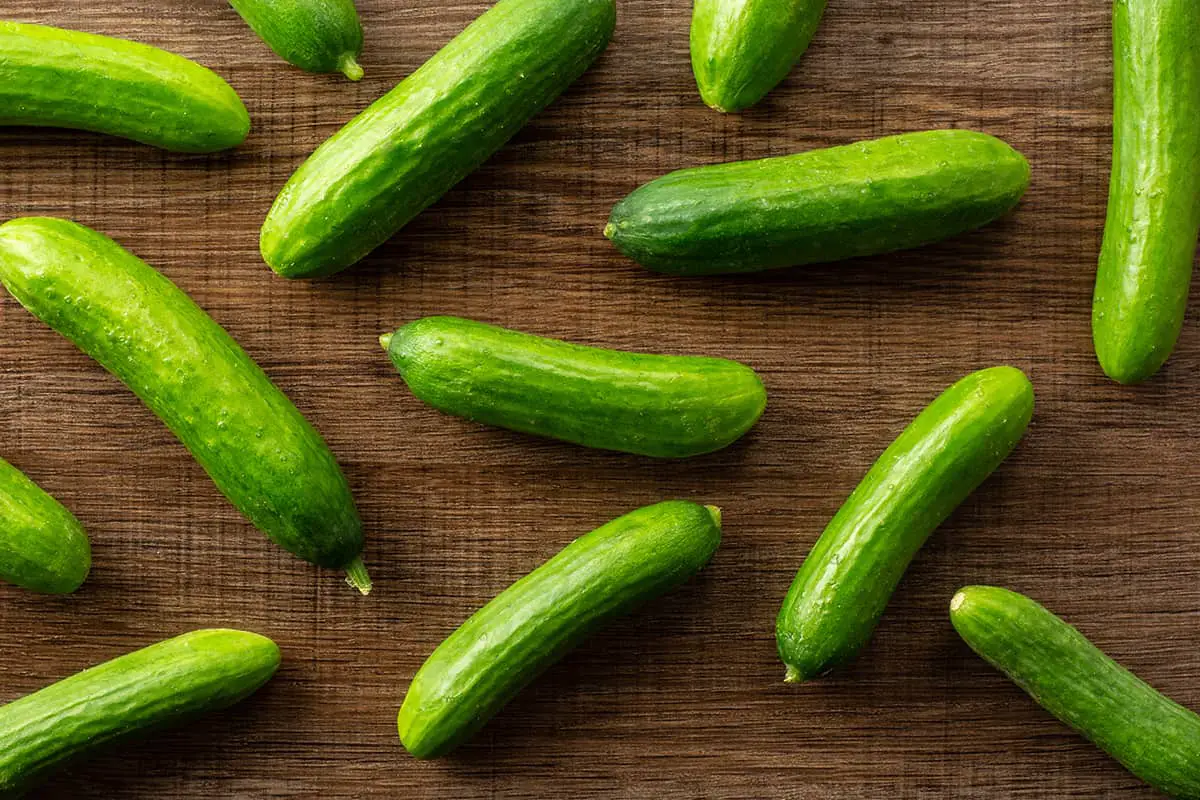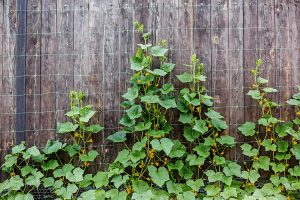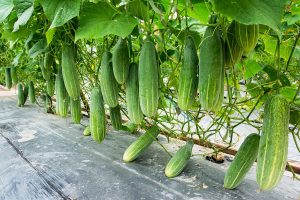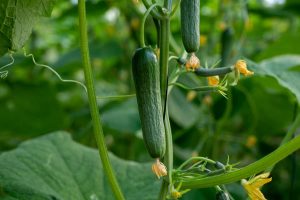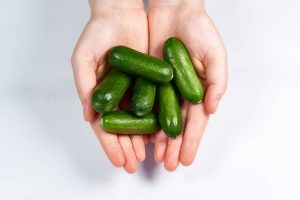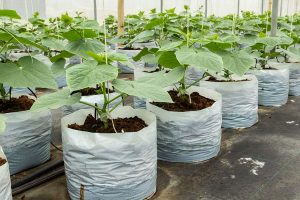Picolino Cucumber plants produce small cucumber fruits which are great for snacking on. They have a mild and refreshing flavor, which makes them suitable for a variety of uses. The plants are easy to care for and can be grown in a wide range of climates during spring, summer, and fall.
- Botanical name: Cucumis sativus ‘Picolino’’
- Common names: Picolino Cucumber
- Plant family: Cucurbitaceae
- USDA hardiness zone: 4 – 12
- Mature height: 5 feet
- Mature spread: 2 feet
Table of Contents
What is a Picolino Cucumber?
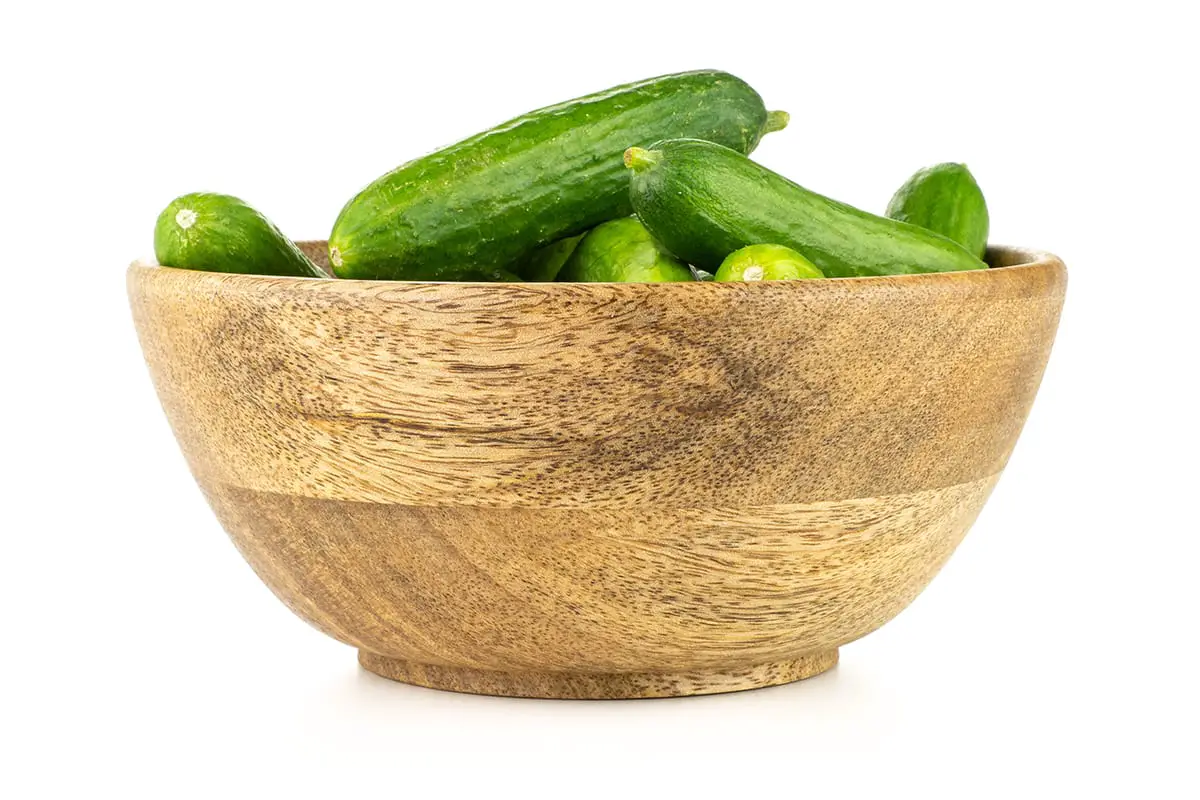
The Picolino Cucumber plant is a popular novelty variety, producing cocktail cucumbers from early summer to fall. Like most other cucumber plants, the Picolino cucumber is easy to grow, and very rewarding.
The fruits it bears are compact in size, at around 4 to 5 inches in length. The skin is smooth and glossy, and deep green in color, similar to more common standard size cucumber varieties. These plants can be grown indoors or outdoors, though they must be kept free from frost, since they are not hardy plants.
Home growers favor Picolino Cucumbers, and you can also often find them at farmers markets, though they are not widely commercially produced. Their size makes them ideal for using in the preparation of one meal without having any leftovers going soft in the refrigerator. They are also very versatile, being suitable for eating fresh as well as pickling.
How to Care for Your Picolino Cucumber
Picolino Cucumber plants, like other types of cucumbers, take the shape of vines. These can be grown along the ground, but most people choose to stake them or train them to grow on a trellis, as this keeps the fruits away from the ground which reduces issues with pests or rot, and it also means the plants take up less ground space. By growing Picolino Cucumber plants vertically, they become suitable for keeping in compact spaces such as small gardens or on apartment balconies.
Planting
As Picolino Cucumber plants are annuals, most growers will grow them from seed. This is easy to do, and the seeds have good success rates so long as the temperature is suitable. In warmer climates where spring arrives early, you can sow cucumber seeds outside as soon as the final frost has passed however in cooler climates, it’s a good idea to get a head start on the season by sowing cucumber seeds indoors in March or April.
This is because the plant will take around 50 days until it is ready to harvest, so you will get a longer harvest period before fall arrives. Use a good quality soil with some organic content, and lay seeds on their side at around a quarter to half inch depth in the soil. Keep the soil moist and ensure it remains above 50 °F.
Cucumber seeds will not germinate below this temperature, and to increase chances of germination the soil temperature should be approximately 70 °F. Once seedlings have developed, the Picolino Cucumber plants can be transplanted to larger pots or planted directly in the ground. The roots of these plants are easily damaged, so take extra care when transplanting.
Light
The Picolino Cucumber plant should be allowed a minimum of 6 to 8 hours of direct sunlight each day. A full sun position is best for these plants, though they can tolerate some partial shade during the heat of the afternoon. When grown outside, these plants should be kept away from taller plants that could shade them, and if grown inside on a windowsill, be sure to choose a south or west-facing window.
Soil
A soil that does not have any drainage issues is essential for growing the Picolino Cucumber plant because it cannot survive in wet or soggy soils. These plants will tolerate most soil types, including sandy, loamy, or clay soils, as long as they are able to drain well. If you can get the drainage correct for your Picolino Cucumber plant, then it will be very easy to grow and care for.
However, if the soil does not drain well, then the plant will struggle to thrive from the start. Planting the Picolino Cucumber on a raised area or a hill will help to aid drainage because water will be encouraged away from the roots rather than pooling at the base of the plant or around the roots.
Water
Picolino Cucumber plants need plenty of water to develop an abundance of flowers and juicy fruits. The fact that these plants are so reliant on generous watering is another reason why soil drainage is so essential.
When watering the Picolino Cucumber, aim to keep the soil moist but not wet. If you find that the soil is drying out too quickly, you can add mulch to help prevent moisture evaporation, which will reduce the frequency with which the plant needs to be watered. These plants are not drought tolerant, and if they do not receive a liberal amount of water, they will not thrive.
Temperature
As annuals, Picolino Cucumbers are suitable for growing in USDA hardiness zones 4 to 12. They are frost tender, so be sure that the final frost has passed before these plants are allowed outside. The ideal temperature for these plants is between 75 and 85°F, though they will also fare well in temperatures ranging from 65 to 75°F.
Fertilizer
Applying a fertilizer to the Picolino Cucumber plant is recommended to help it sustain rapid growth and aid with fruit production. For the sake of ease, a balanced fertilizer can be used throughout the season, or you can adjust the levels of specific nutrients at different points in the season to customize the fertilizer to the stage the cucumber plant is at.
Before fruits have developed, use a fertilizer with an NPK of 5-10-10, and once the fruits start to form, opt for a fertilizer that is high in potassium, such as an NPK of 5-5-10. Avoid fertilizers that are high in nitrogen, as this will lead to an overproduction of foliage at the expense of the fruits.
Harvesting
Picolino Cucumbers are ready to be harvested in late June, and they will continue to fruit right up until October, providing many weeks of cute cucumber harvests. It is best to remove the fruits from the plant in the morning using a sharp knife or secateurs.
The cucumbers are ready to be harvested when they measure at least 4 inches in length. Once Picolino Cucumbers grow to be longer than 5 inches in length, they tend to take on a bitter taste, which makes them much less pleasant to eat.
Uses for Picolino Cucumbers
The compact size of Picolino cucumbers makes them ideal for snacking, and they can be eaten fresh straight from the plant. If you are preparing a salad or sandwiches for a few people, the Picolino cucumber is the perfect size to use the whole thing for one dish, rather than using half of a full-size cucumber, where the leftovers will then start to degrade. Picolino cucumbers are also small enough to be pickled in jars, which allows them to be kept in the pantry for an extended length of time before consumption.
